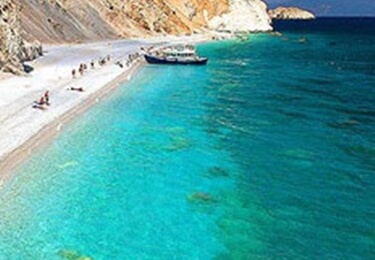 Skyros belongs to the Sporades group, but it is further away east from the rest and has developed independently. Its morphology is quite interesting, as the island is almost divided into two parts by a narrow isthmus in the middle. The northern part is cultivated,whereas the southern is rocky and almost uninhabited.
Skyros belongs to the Sporades group, but it is further away east from the rest and has developed independently. Its morphology is quite interesting, as the island is almost divided into two parts by a narrow isthmus in the middle. The northern part is cultivated,whereas the southern is rocky and almost uninhabited.
The island gives the impression that it belongs to the Cyclades group rather than the Sporades, due to the plain, cubic architecture in the capital town of Skyros. The house interiors are furnished and decorated with elaborately curved furniture and ornaments made by Skyriot artisans, and you are likely to get an invitation from the proud and extremely hospitable owners to admire a traditional house.
The town of Skyros with the traditional houses and the Venetian castle is absolutely worth visiting. You will be able to stroll through the labyrinth-like streets, and watch the old men in their traditional costumes riding tame ponies, descendants of the wild ponies of a unique breed that used to roam freely, but are now almost extinct. Other things to see on Skyros are the impressive archaeological museum and the Traditional Skyrian House Museum, but the not-to-be-missed place is the Faltaits Museum with one of the best folk art collections in Greece (admission is free, although the museum is private). Poet Rupert Brooke's grave is also on the island, near Tris Boukes bay in the south. It's not difficult to find but a bit of trekking is needed to reach it.
